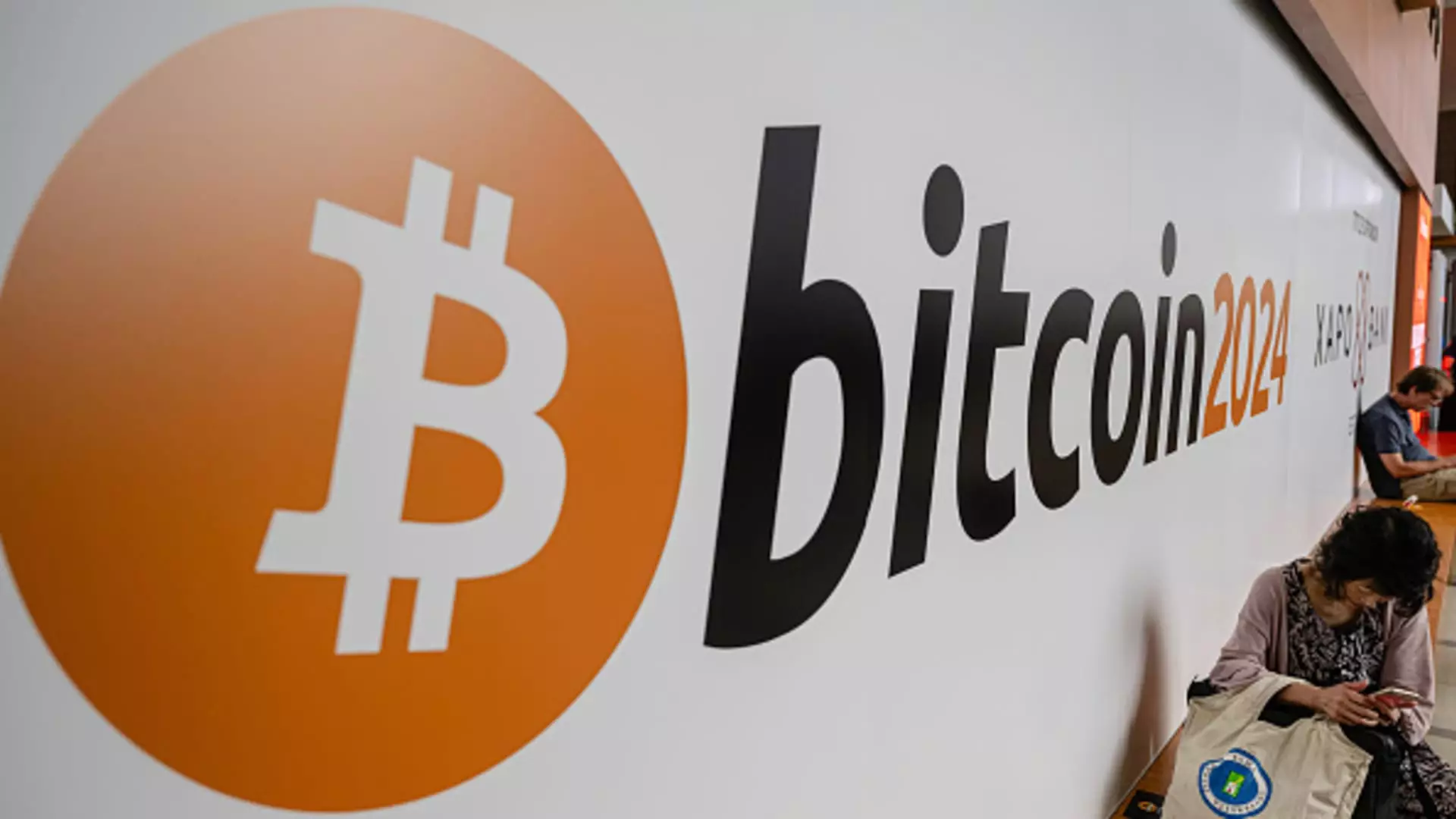Bitcoin has solidified its place as a dominant player in the world of finance, yet the path to profitability within the mining sector presents both hopeful peaks and disheartening valleys. Recent developments highlight this tug-of-war, marked by rising enthusiasm among Bitcoin enthusiasts and the sobering realities faced by miners. In this analysis, we will delve into the implications of recent trends, such as the soaring network hash rate and the diminished profitability of mining operations, while also exploring opportunities for innovation in a rapidly evolving economic landscape.
In the past week, Bitcoin’s price experienced a noteworthy surge of 12%, generating excitement in the cryptocurrency community. Additionally, the network’s hash rate reached an unprecedented high, signifying robust participation from miners working to validate transactions and maintain security on the blockchain. The hash rate is critical, representing the total computing power dedicated to mining activities. A growing hash rate usually indicates confidence in Bitcoin’s long-term viability, as more miners join the ecosystem to capitalize on potential rewards.
However, the increasing hash rate also brings significant challenges. As more miners proliferate, the division of rewards per miner decreases, ultimately affecting the profitability of operations. The fact that more miners are engaging with the network signals the allure of potential financial gains; yet this influx also creates an untenable situation for many. The competitive nature of mining has transformed it from a relatively straightforward venture into a fierce and costly pursuit.
Profitability Struggles: A Harsh Reality for Miners
Despite the encouraging metrics surrounding Bitcoin’s hash rate, miners have lately faced significant hurdles. According to investment bank Jefferies, profitability in the mining sector is waning, particularly in August, where they reported an 11.8% decline in average daily revenue per exahash compared to the previous month. As mining transitions from a lucrative opportunity to a more challenging endeavor, the complexities of operational costs loom larger than ever.
This trend indicates a broader shift within the Bitcoin ecosystem. As Bitcoin matures and integrates into traditional finance, it appears that the days of easy profits may be behind us. This maturation is amplified by the influx of institutional capital, catalyzed by regulatory approvals of Bitcoin exchange-traded funds (ETFs). However, the entry of institutional money often leads to increased competition for rewards, as larger players deploy powerful machines to claim their share of the pie.
An essential aspect of Bitcoin’s programming is its halving event, which occurs approximately every four years and serves to reduce the issuance rate of new coins. This mechanism, designed to create scarcity, directly influences miner revenues and market dynamics. Following the most recent halving in April, Bitcoin miners find themselves in a precarious position, facing reduced rewards amidst ongoing operational costs. This scenario has historically resulted in financial strain for mining firms, leading to bankruptcy and consolidation within the industry.
While the market price of Bitcoin has shown an appreciable rise, with a reported increase of around 44% in 2024, many mining companies have struggled to keep pace with these price fluctuations. Notably, public miners such as Marathon Digital and Riot Platforms have suffered dramatic declines in their stock prices, indicating a growing disconnect between the value of Bitcoin itself and the financial health of mining operations.
Amid the challenges facing Bitcoin miners, a few companies have embraced innovative strategies to navigate the changing landscape. Core Scientific, emerging from bankruptcy earlier this year, demonstrates the potential to adapt by leveraging existing mining infrastructure for high-performance computing (HPC) and artificial intelligence (AI) applications. With a recent $6.7 billion partnership with CoreWeave, a startup centered on GPU-powered computing, Core Scientific is setting itself apart in an increasingly competitive environment.
As highlighted in a report by Bernstein, Core Scientific represents a prime example of a mining firm successfully diversifying its offerings. By transitioning to multi-use facilities capable of both Bitcoin mining and HPC operations, the company is positioning itself to capture a share of the burgeoning data center market. This strategic pivot not only enhances the financial prospects of the firm but also reflects a broader trend wherein adaptability will dictate survival in the mining landscape.
Conclusion: Navigating Tomorrow’s Opportunities
The world of Bitcoin mining is in a state of flux, characterized by unprecedented highs and significant challenges. As the network continues to grow, miners face the dual pressures of increased competition and declining profitability. However, innovation and diversification signal that not all is lost. Companies keen to embrace change, such as adapting their infrastructure for additional revenue streams, are better positioned to capitalize on future market opportunities. As Bitcoin matures, only those who actively seek to navigate these unpredictable waters will thrive, sustaining the cryptocurrency’s legacy in the ever-evolving economic landscape.

